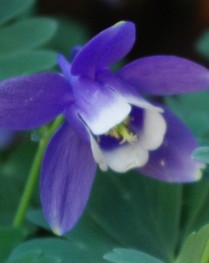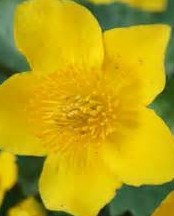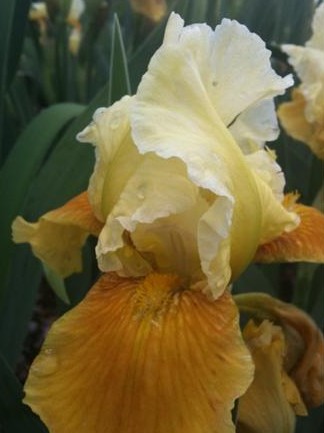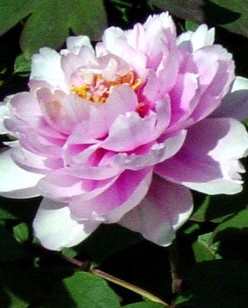 Plants that grow at high altitudes in the mountainous areas of the United States face challenges that plants at low elevations do not. One of the most significant is the short growing season which gives less time for a plant to grow, make and store food, and produce flowers. Cold, of course is another issue, as is unexpected hail, snow, or frosts. The low humidity, however, is a plus as it cuts down the incident of disease. In addition, the many microhabitats of a mountainous environment offer opportunities for many different kinds of plants.
Plants that grow at high altitudes in the mountainous areas of the United States face challenges that plants at low elevations do not. One of the most significant is the short growing season which gives less time for a plant to grow, make and store food, and produce flowers. Cold, of course is another issue, as is unexpected hail, snow, or frosts. The low humidity, however, is a plus as it cuts down the incident of disease. In addition, the many microhabitats of a mountainous environment offer opportunities for many different kinds of plants.
These early blooming herbaceous perennials are all hardy to USAD zone 3 and are adapted to various microhabitats of high altitudes.
Fan Columbine (Aquilegia flabellate)
 A native of Japan, this compact plant has blue-green fan-shaped leaves that are darker and thicker than most other columbine species. The nodding flowers are lilac to purple with white tips, are 1 ½”, and have hooked spurs. White varieties are available.
A native of Japan, this compact plant has blue-green fan-shaped leaves that are darker and thicker than most other columbine species. The nodding flowers are lilac to purple with white tips, are 1 ½”, and have hooked spurs. White varieties are available.
Size: 8-18” H 12” W
Light: Full to part shade
Soil: Average, medium moist, well-drained
Marsh Marigold (Caltha palustris)
 Glossy, toothed, bright green kidney-shaped leaves form mounded clumps. Well branches stems 1-2’ tall carry the flowers in terminal or auxiliary clusters above the foliage. Each flowers is bright yellow, waxy and 1-1/2” across. An excellent choice for damp boggy places near a waterway or pond. The cultivar ‘Flore-Pleno’ has fully double pompom-like flowers and blooms for a longer time than the species.
Glossy, toothed, bright green kidney-shaped leaves form mounded clumps. Well branches stems 1-2’ tall carry the flowers in terminal or auxiliary clusters above the foliage. Each flowers is bright yellow, waxy and 1-1/2” across. An excellent choice for damp boggy places near a waterway or pond. The cultivar ‘Flore-Pleno’ has fully double pompom-like flowers and blooms for a longer time than the species.
Size: 1-2’ H x 1.5’ W
Light: Full sun to part shade
Soil: Humusy, consistently moist; not drought tolerant
Common Bleeding Heart (Dicentra spectabilis)
 Common bleeding heart was first introduced to England from Japan in 1840 and is an outstanding garden plant. The flowers have pink hearts with two white petals protruding; the leaves are divided with wedge shaped leaflets. After blooming the plants go dormant. ‘Pantaloons’ is a superior white cultivar.
Common bleeding heart was first introduced to England from Japan in 1840 and is an outstanding garden plant. The flowers have pink hearts with two white petals protruding; the leaves are divided with wedge shaped leaflets. After blooming the plants go dormant. ‘Pantaloons’ is a superior white cultivar.
Size: 1H x ½ -2 ½’ x 2-3’ W
Light: Part to full shade
Soil: Moist, rich, well-drained
German Iris (Iris germanica) The earliest German iris to bloom are the dwarf or miniature varieties, and bloom time gets later with height. Regardless of height, all German iris are bearded and grow from fleshy rhizomes. Many have very large showy flowers.
The earliest German iris to bloom are the dwarf or miniature varieties, and bloom time gets later with height. Regardless of height, all German iris are bearded and grow from fleshy rhizomes. Many have very large showy flowers.
Size: 6”-4.5’ H x 1-2’ W
Light: Full sun
Soil: Average, very well-drained
Peony (Paeonia lactiflora) These natives of China grow in upright clumps with dark green lobed leaves that remain handsome from spring to fall. Flowers are usually white, pink, and dark red and may be single to vary full. Peonies have been hybridized and vary in color,size, fullness of bloom, and bloom time so you have many options available.
These natives of China grow in upright clumps with dark green lobed leaves that remain handsome from spring to fall. Flowers are usually white, pink, and dark red and may be single to vary full. Peonies have been hybridized and vary in color,size, fullness of bloom, and bloom time so you have many options available.
Size: 1.5-3.5’ H x 2-3’ W
Light: Full sun
Soil: Average-fertile, evenly moist, well-drained
